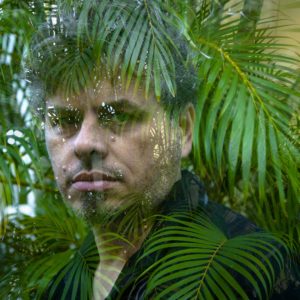Laurent Bayly

Works
Approach
Of course, my approach is firstly very personal and subjective. Each one of my photographs could be a self-portrait or an autobiography. One could very much say they are also poems. But it is not up to me to draw their lines, their features or their themes… I leave it to the photographs to speak for themselves, and I leave it to other people to comment on them!
I can also say that my whole photography approach consists in changing the way people look at things. I photographed a lot of places where I would live but those places were also greatly damaged by the pictures taken of them. I’m thinking about the Côte d’Azur where I truly started, this gulf of Saint Tropez turned vulgar by mass tourism and made insipid by postcard imagery. I then decided to photograph it radically in black and white, off-season or very early in the morning when the party-animals had gone quiet and when the tourists hadn’t woken up yet… I also try to reveal other layouts, other reconstructions through framing, lighting, and through me capturing the moment in familiar places that all of a sudden can become strange places for those who get around them on a daily basis. It is about allowing to question our relationship with realms of everyday life by showing in particular the subjective and poetic dimension they can have.
Now transpose it to what I do in Saint Martin and in the Caribbean (Guadeloupe, Saint Lucia, Saint Barth, Tortola…) and you will see some similarities. Here, professional or amateur photographers, tourists or locals – and especially the latter – find themselves prisoners of a commonplace imagery that, when you think about it, banalizes Saint Martin by making it look like any other tropical island just as “idyllic”, as the island is appreciated through the smallest esthetic common denominator… One could even dare to call it an equivalent of YouPorn for photography. Furthermore, the efficiency of those pictures, as far as tourism promotion, could also be questioned. Why would people come on our island if they are bound to find the same things elsewhere? The camera eye with an artistic approach seems to be radically missing, or at least drown in the stream of common, stereotyped and promotional images of Saint Martin and the Caribbean, except for a few (Martinique with David Damoison, Jean Luc de Laguarigue, Cuba of course, the Dominican Republic, and Haiti a little bit). When the camera eye is actually present, it is often a foreign one, as the one of Alex Webb on Haiti… Besides, as far as Haiti is concerned, this eye belongs too often to press photographers using catastrophe as a paradigm…
In the end, we can’t help but notice that statistically and quantitatively, the imagery of our island is largely dependent on touristic and – let’s face it – colonial stereotypes. Glancing through the social networks, the press, the magazines, the books and other diverse publications, you will rarely see anything else than idyllic landscapes, white sand beaches and turquoise waters, sunsets and young women more or less naked waiting for the tourist as the slave would wait for the master in olden days, or as the native would the colonizer.
What I am trying to do is show Saint Martin, especially, to its own population through a humanist, esthetic and poetic approach. I want to change the eye through art, and enable everyone, locals or travelers, to develop an eye.
Biography
Born in 1971 in London (United Kingdom), Laurent Bayly discovered photography rather late despite his artistic and literary course. As a self-taught man, and even though he dabbled in drawing and painting for a while, he has now photographed for fifteen years or so. The French humanist photographs such as Henri Cartier Bresson or Willy Ronis heavily left their mark on his work. Until 2011, he used almost exclusively black and white silver print photography. He then went onto digital and color photography when he moved to Saint Martin in the Caribbean. His work on color, composition and even material reveals his tropism towards painting. His beginning as a HMF member in 2015 seems to indicate a will to tackle other, more blended artistic practices.
